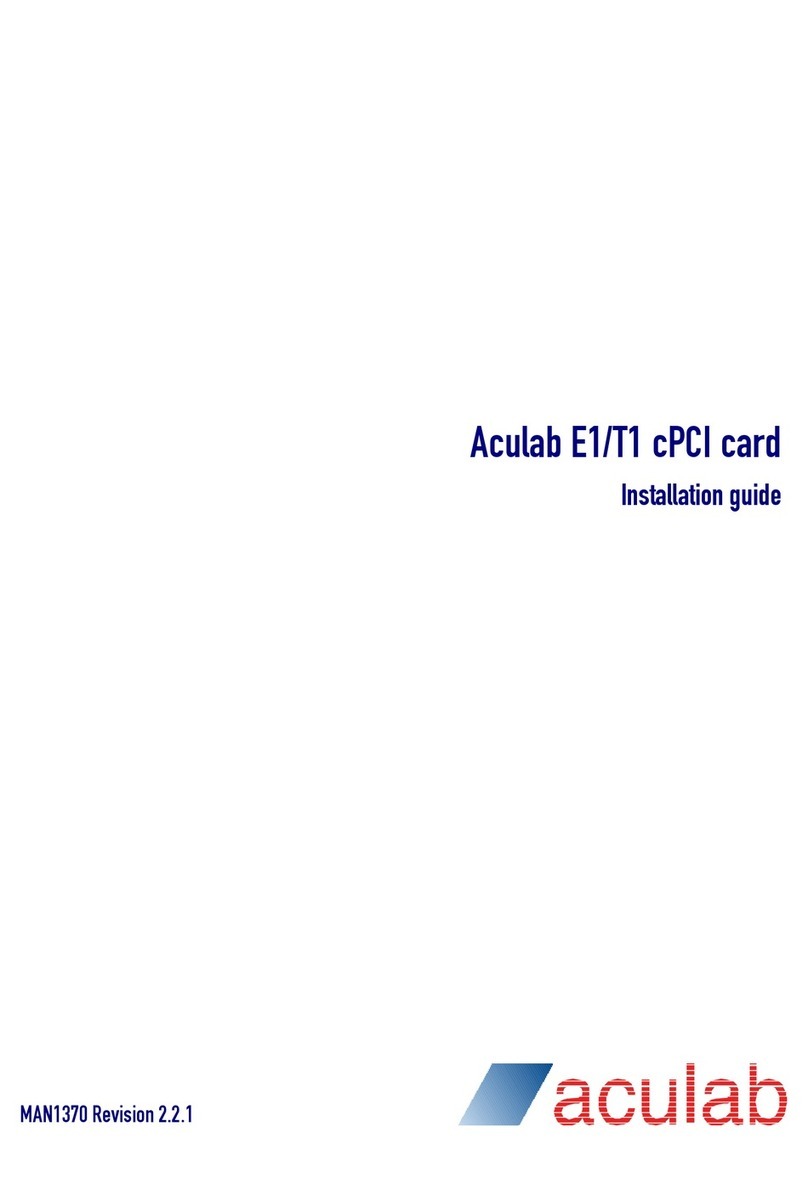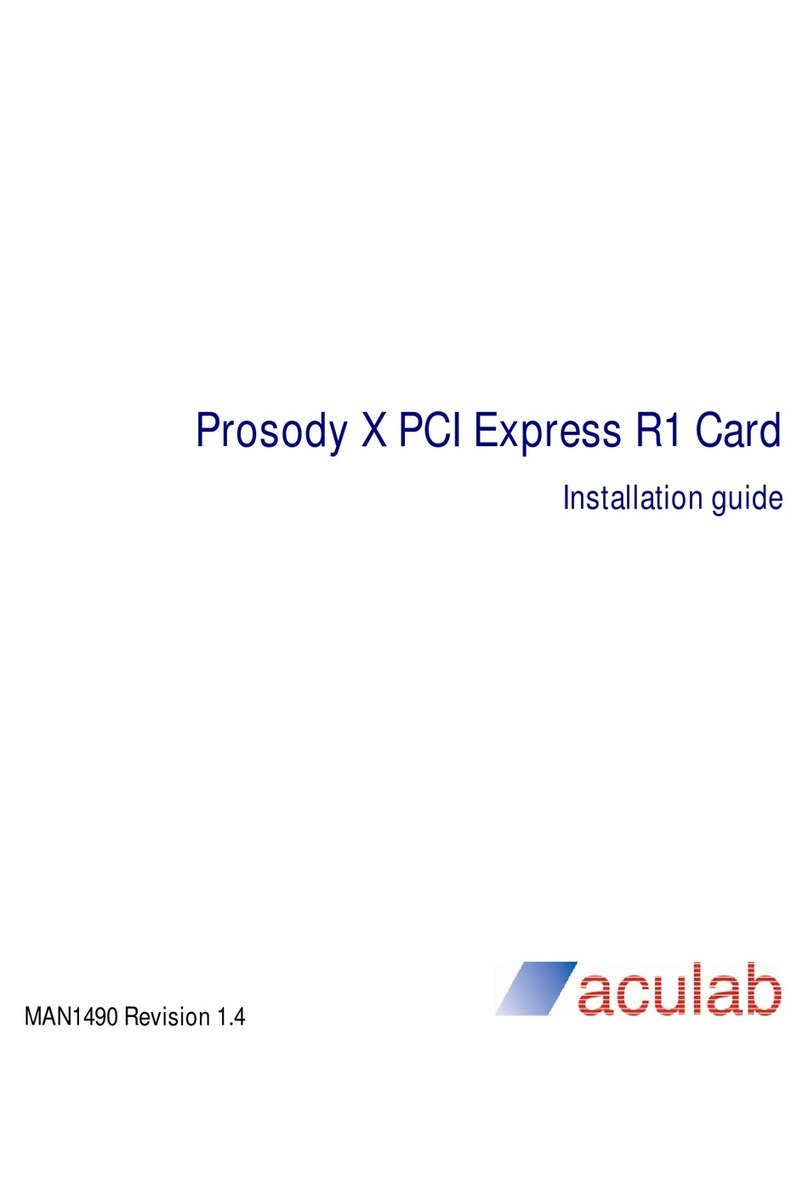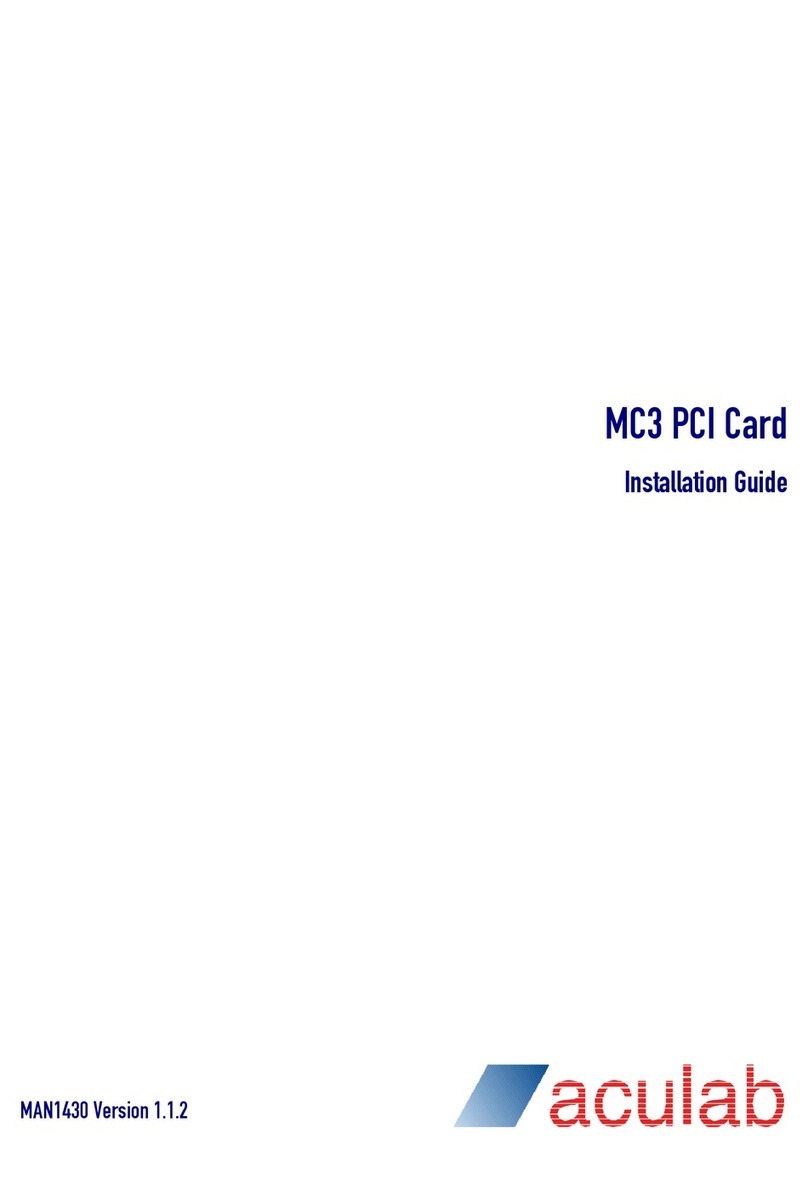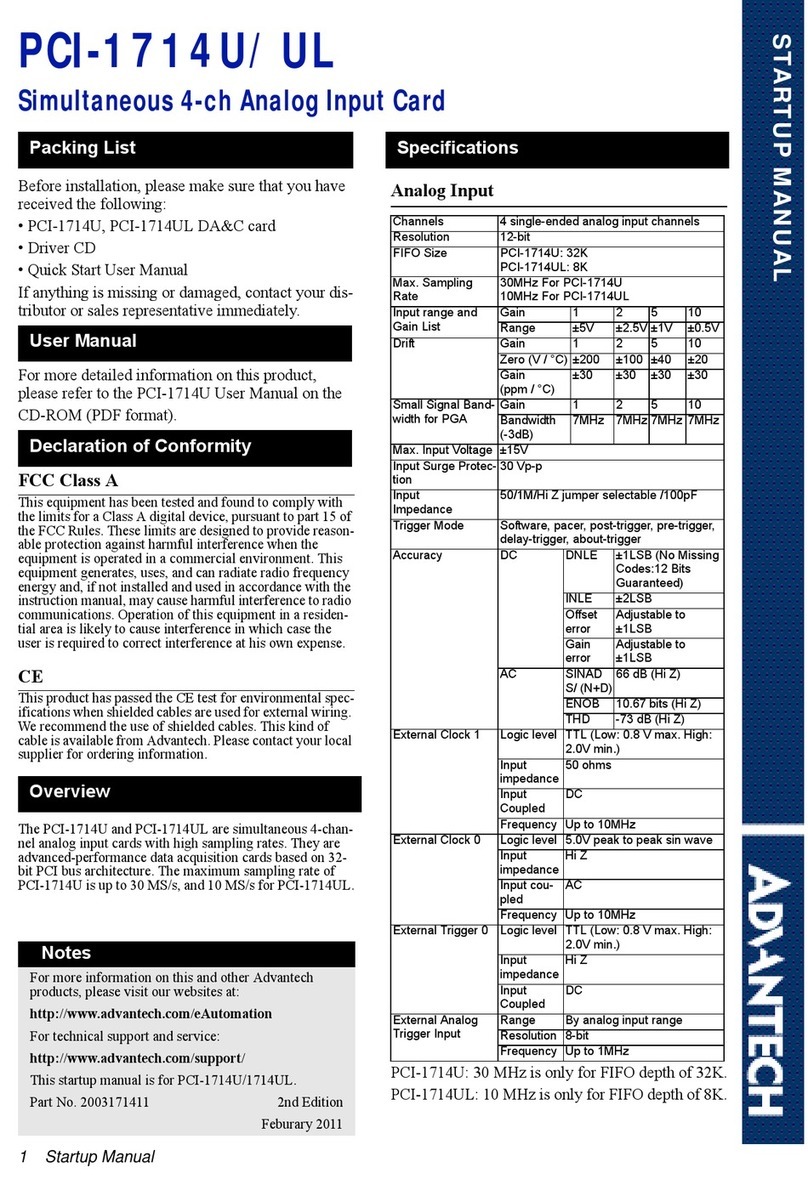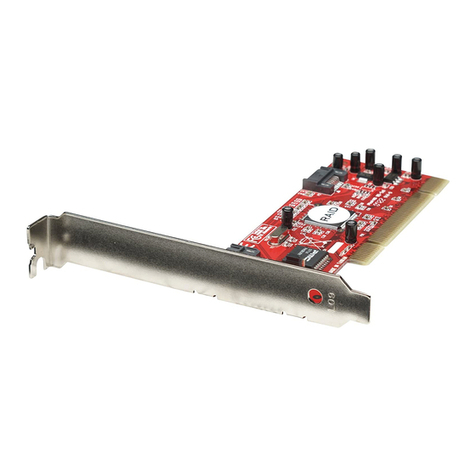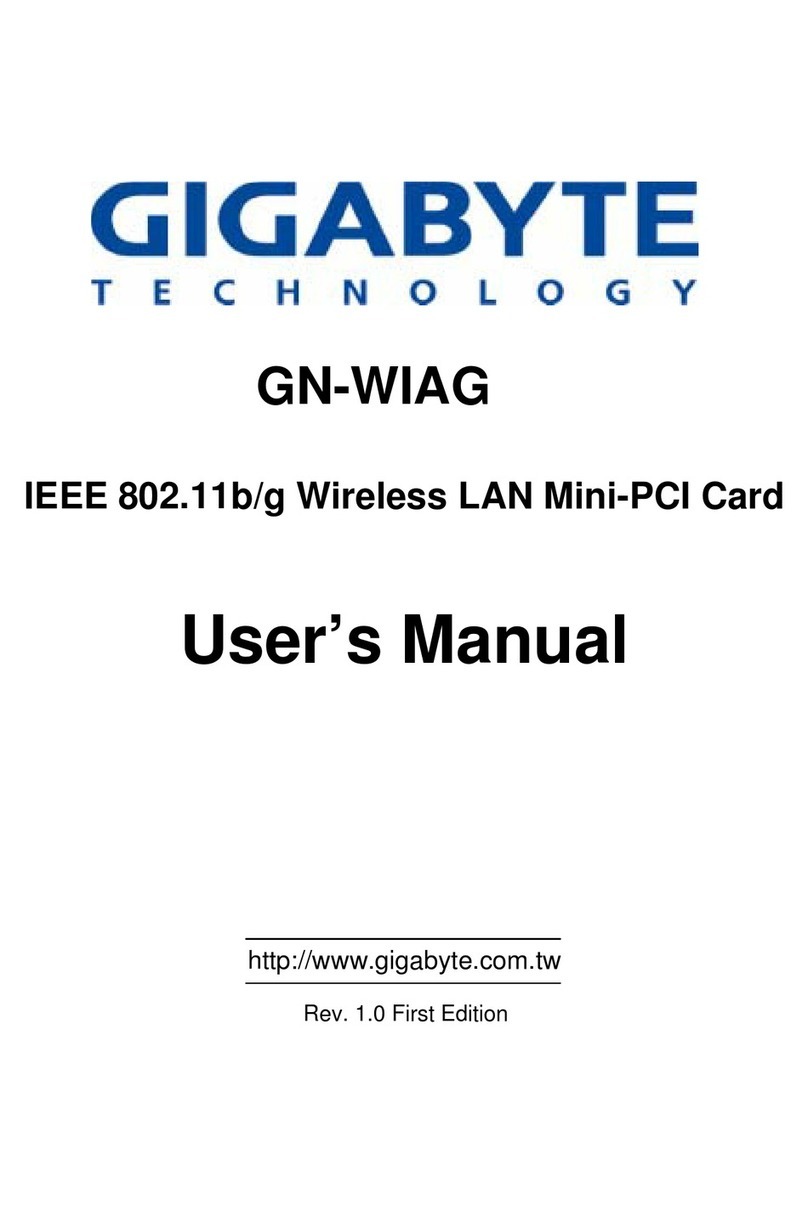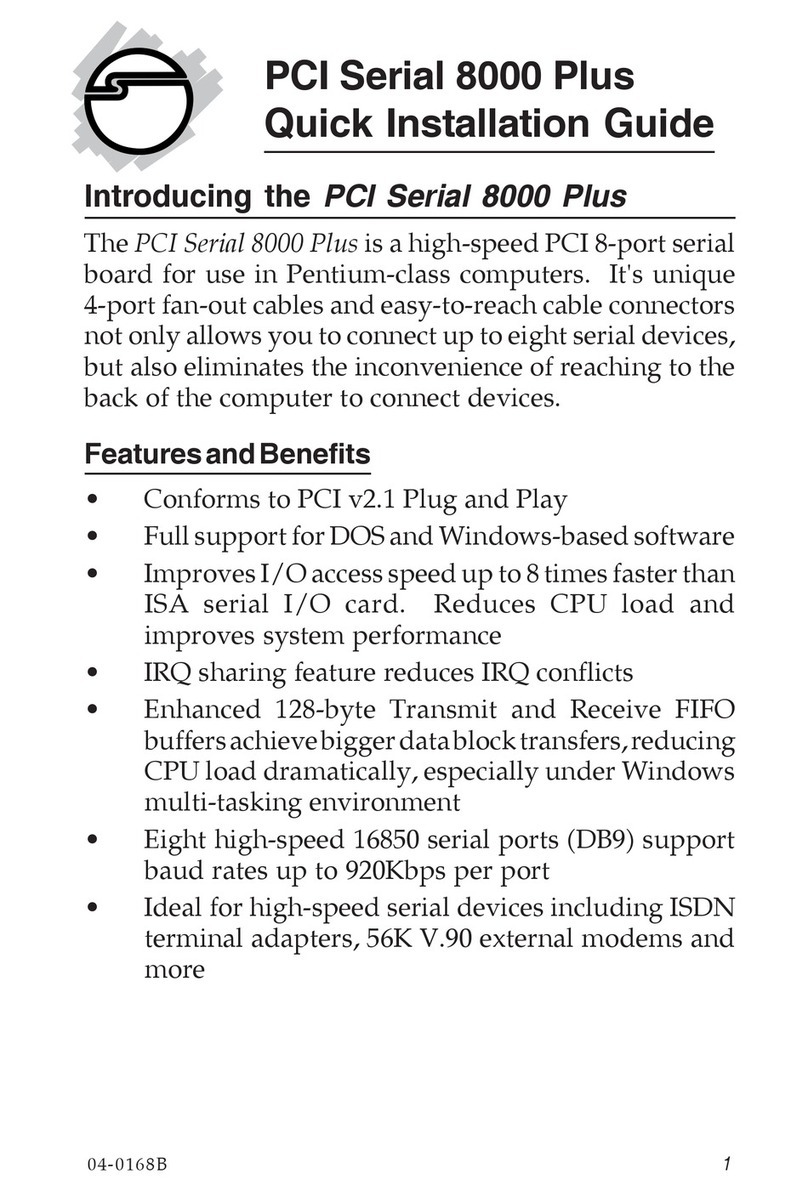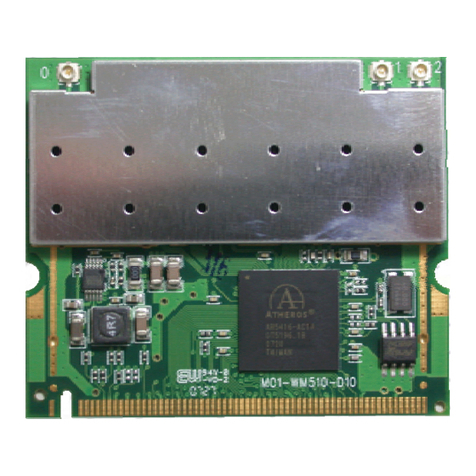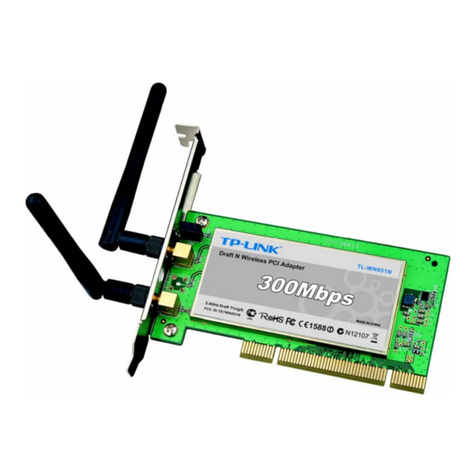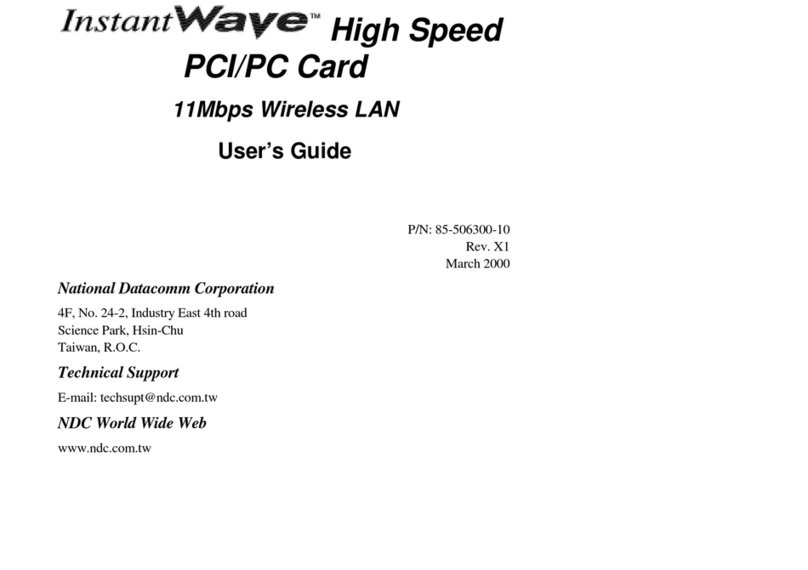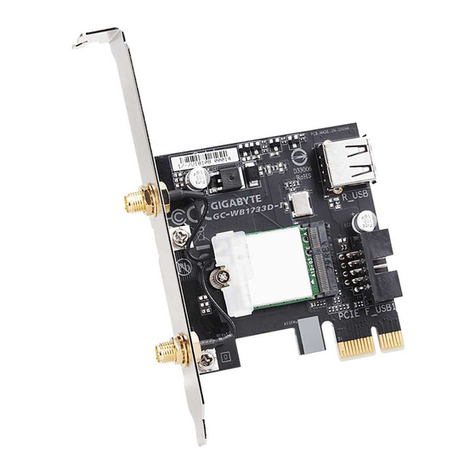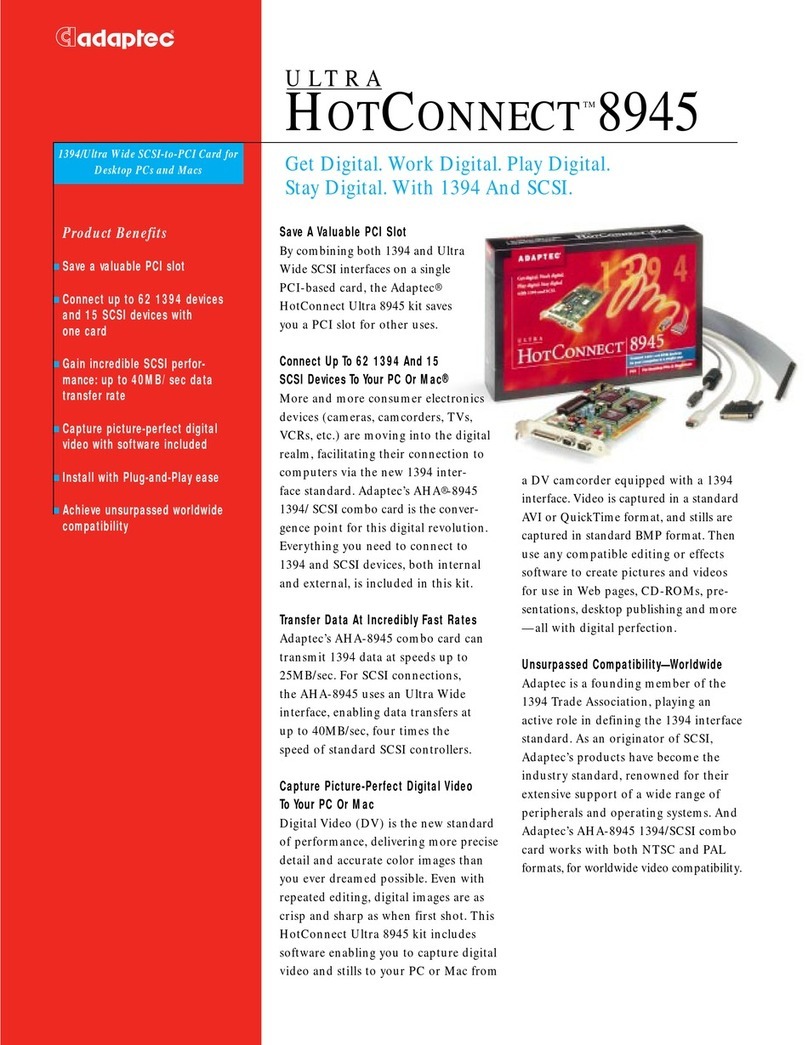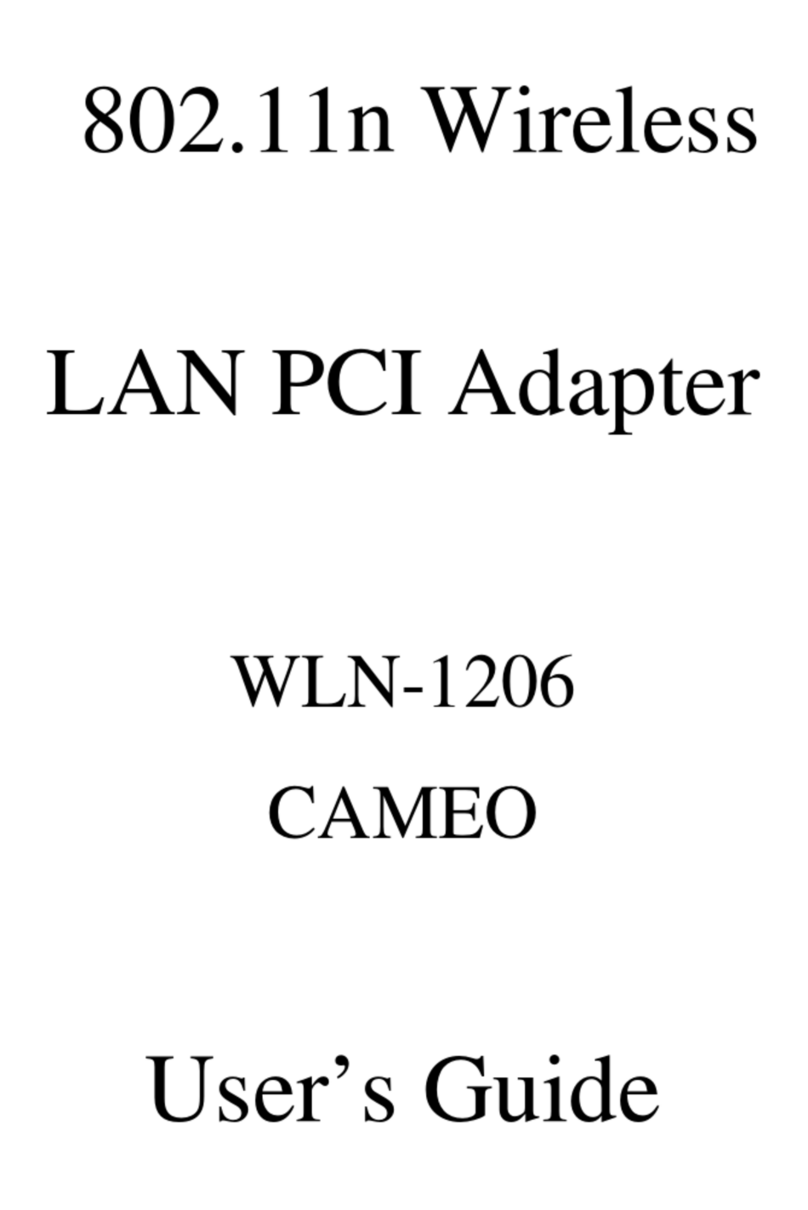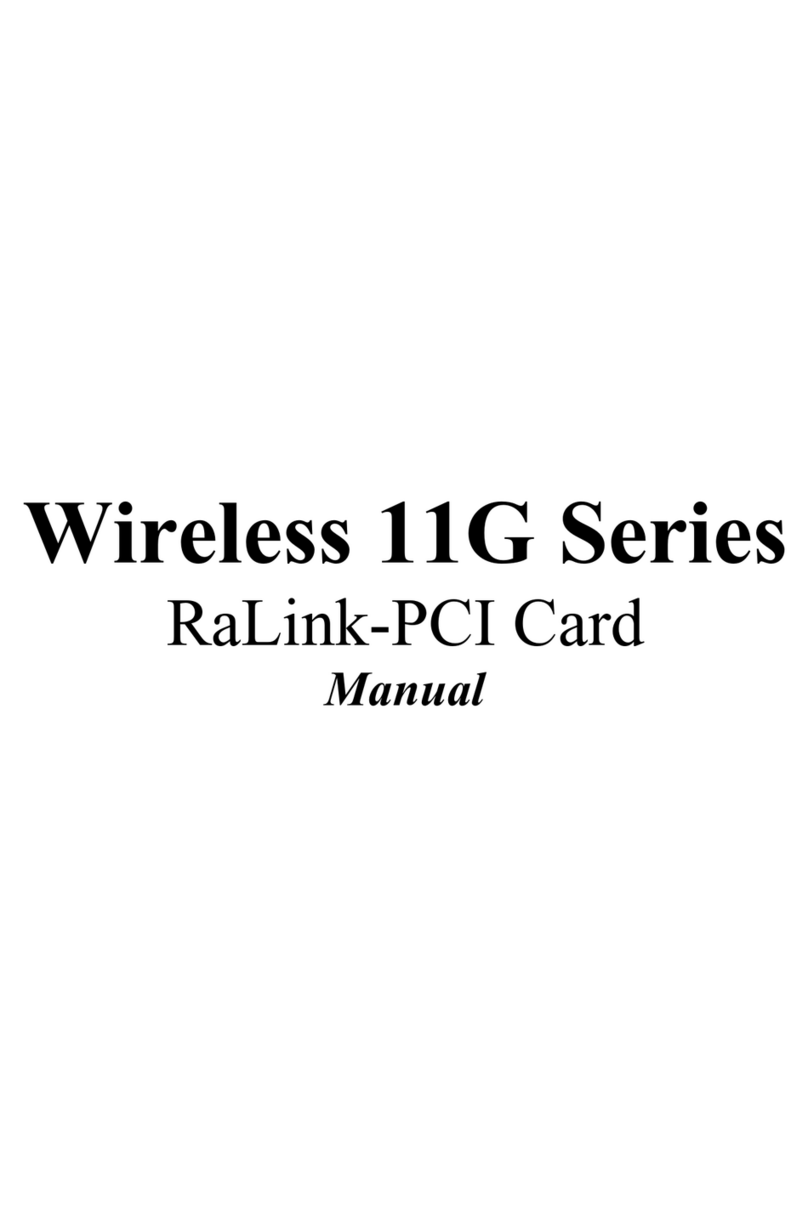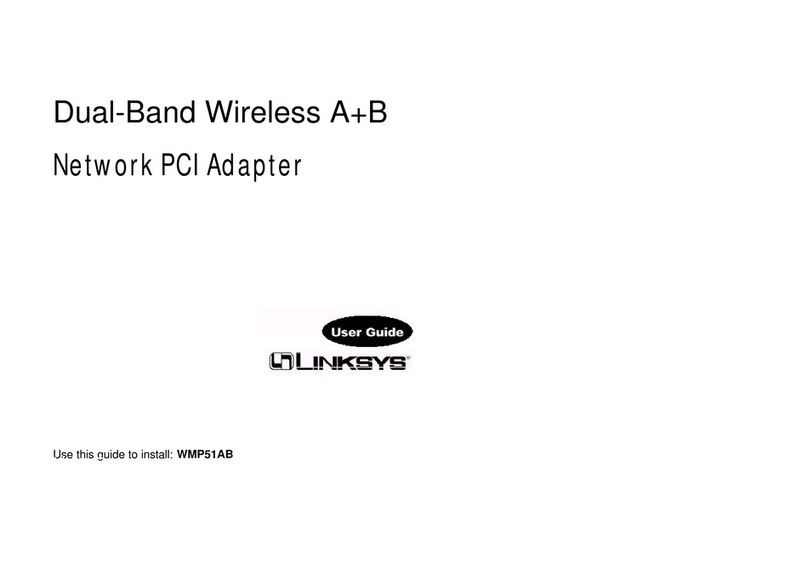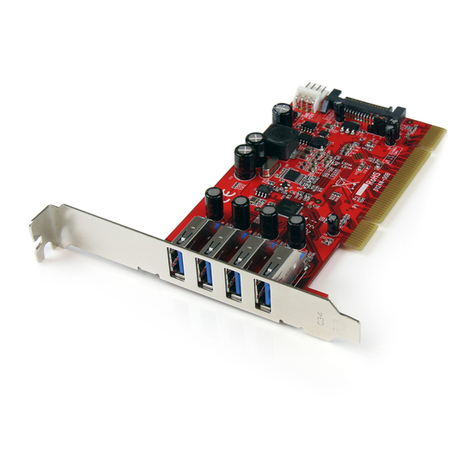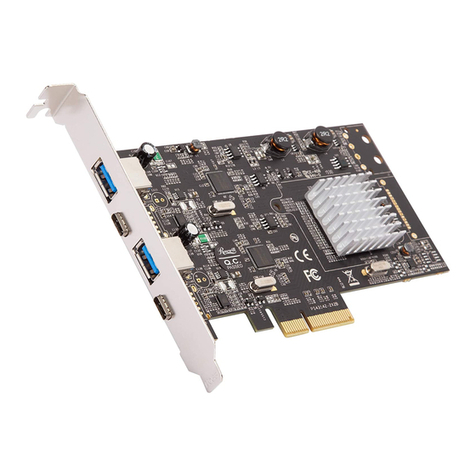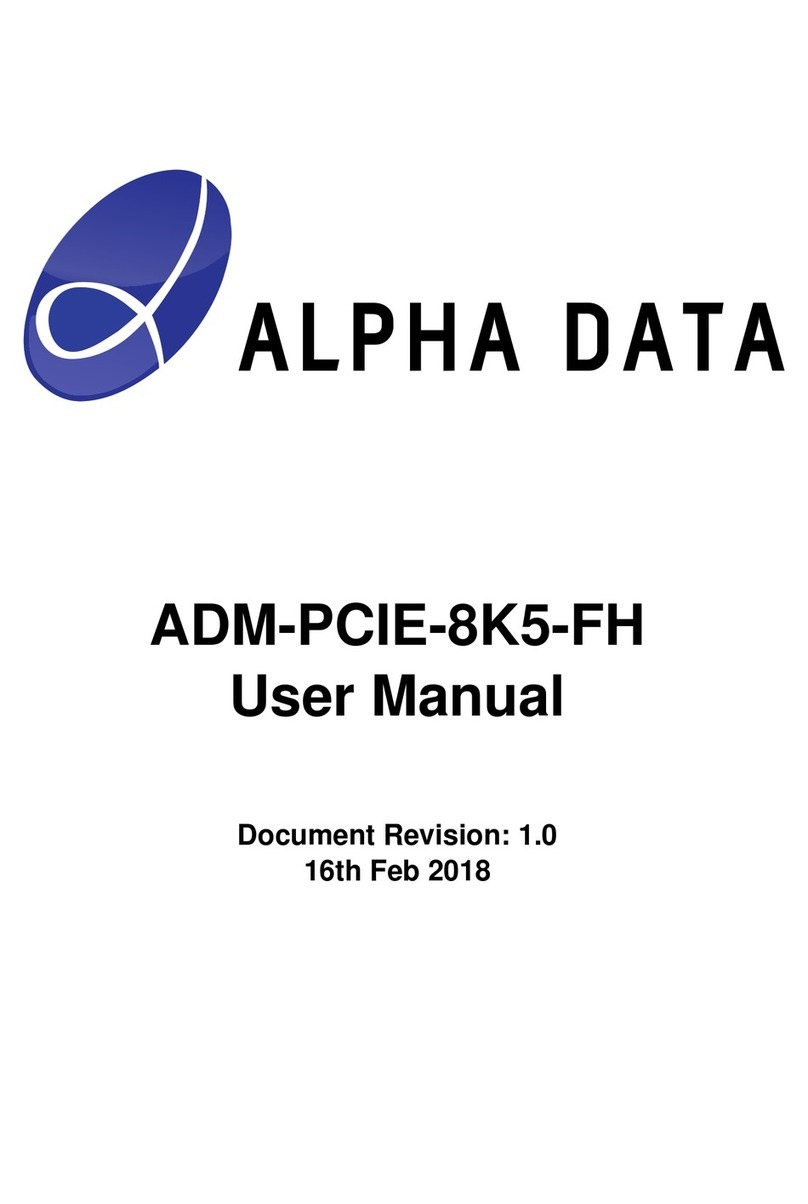aculab Prosody User manual

MAN1360 Revision 2.2.3
Aculab Prosody™compact PCI
Installation Guide

Prosody compact PCI installation guide
2
Proprietary Information
The information contained in this document is the property of Aculab plc and may be the
subject of patents pending or granted, and must not be copied or disclosed without prior written
permission. It should not be used for commercial purposes without prior agreement in writing.
All trademarks are recognised and acknowledged.
Aculab plc endeavours to ensure that the information in this document is correct and fairly
stated but does not accept liability for any error or omission.
The development of Aculab products and services is continuous and published information may
not be up to date. It is important to check the current position with Aculab plc.
Copyright©Aculab plc 2000: All rights reserved
Document Revision
Rev Date By Detail
1.0 Apr 2000 DMB First release
1.1 July 2000 DMB Approvals update
1.2 Oct 2000 DMB Addition of Japanese Approval details
1.3 Feb 2001 DJL Addition of UL Requirement
1.4 Au 2001 DJL Addition of 75ohm and DASS information.
1.5 Nov 2001 DJL Minor changes + glossary of abbreviations
1.6 Apr 2002 DJL Correction of format errors
1.7 Jan 2003 DJL Clarification on 75ohm working
2.0 Jun 2003 CJG Introduced Revision 2 PM
2.1 Jul 2003 DJL Clarification on the use of Ferrites
2.2 Dec 2003 DJL Addition of clarification on PM LED reset state
2.2.1 Jan 2005 DJL Introduction of DSP65
2.2.2 Aug 2005 DJL Update to USA/AUS and Rev 2 PM details
2.2.3 11.07.06 DJL Change to Australia approvals certificate holder reference

Prosody compact PCI installation guide
3
Contents
1Introduction............................................................................................................................... 4
1.1 General............................................................................................................................. 4
1.2 Uses of the Prosody cPCI card .......................................................................................... 5
1.2.1 Speech Processing functions ................................................................................. 5
1.3 Telephone Network Attachment ....................................................................................... 6
1.4 75 ohm network connection............................................................................................. 6
1.5 Prosody cPCI card - host interface..................................................................................... 7
1.6 Call Control ...................................................................................................................... 7
1.7 Speech and Data Paths ..................................................................................................... 8
1.7.1 H.110 CTBus loading........................................................................................... 8
2Card Installation...................................................................................................................... 9
2.1 Installing additional Modules............................................................................................ 9
2.2 Installing the card.............................................................................................................. 9
2.3 French - Installation de la carte....................................................................................... 10
2.4 German - Installation der Karte....................................................................................... 10
2.5 CompactPCI card LED usage........................................................................................... 11
2.6 PM module LED usage.................................................................................................... 11
3Approval Information........................................................................................................ 12
3.1 Safety Warnings.............................................................................................................. 12
3.2 EMC Compliance............................................................................................................ 12
3.3 Approval Details............................................................................................................. 12
3.4 Usage and Type.............................................................................................................. 12
3.5 Environmental................................................................................................................. 12
3.6 Network Timing.............................................................................................................. 13
3.7 Power Supply.................................................................................................................. 13
3.8 Approved Functionality................................................................................................... 13
3.9 Regulatory Warnings....................................................................................................... 13
3.10 Approval Label................................................................................................................ 13
3.11 Documentation Release.................................................................................................. 13
3.12 Software Release............................................................................................................. 13
3.13 User Responsibilities....................................................................................................... 14
3.14 Speech Calls ................................................................................................................... 14
Appendix A: Country Specific Information.............................................................. 15
Appendix B: USA/Canada Approval Details........................................................... 16
3.15 E1/T1 cPCI card - host interface ...................................................................................... 16
Appendix C: Approval Details For European Union Countries................. 20
Appendix D: Approval Details for Japan................................................................... 26
Appendix E: Approval details for Australia & New Zealand....................... 29
Appendix F: Technical Specifications......................................................................... 31
Appendix G: Ferrite clamp fitting instructions...................................................... 32
Glossary of abbreviations:................................................................................................... 33

Prosody compact PCI installation guide
4
1 Introduction
1.1 General
This document is the installation and user guide for the Aculab Prosody cPCI card. The base
model of the Aculab Prosody cPCI card is a speech-processing card with the options of 2 or 4
Prosody modules. Four E1/T1 ports and a signalling DSP module can be added to increase the
functionality of the card.
This introductory section of this document provides a general description of the Prosody cPCI
card, and it's features and facilities.
The design of the Aculab Prosody cPCI card allows Network connections to be made via RJ45
connectors on the front edge of the card, or via an optional ‘transition module’ offering RJ45
connectors at the rear of the Compact PCI© chassis. The advantage of the transition module
approach is that cards can be removed and replaced without disturbing the Network
connections.
CAUTION When the transition module is used for network connection, do not attempt to simultaneously connect to the network using the front
panel RJ45 connectors. Only one connector may be used for each network port. Misuse may invalidate Telecommunications approvals.
To avoid problems when replacing or swapping cards, care must be taken to ensure that the
replacement card has the same functionality as the card it replaces. This applies to the number
of network ports on the PM module, if fitted, and the type of signalling DSP, if fitted. PM
modules are available with up to four network ports. Signalling DSP modules are available with
up to four DSPs, (one per port).
DSP65
module
The Aculab Prosody cPCI card and Transition Module with Line Interface Module and optional signalling DSP.
The serial number of the Prosody®cPCI card may be used when configuring the device driver to
uniquely identify a Prosody®cPCI card in the system. The serial number of the card is located on
the reverse of the card (no components) on the top edge and has the format P/N ACXXXX S/N
XXXX WONXXX. Only the number XXXX following S/N is used during driver configuration, the
other numbers are for Aculab use.
This product is referred to as the 'Prosody cPCI card’ in this document unless the context
requires a more specific term.

Prosody compact PCI installation guide
5
The Approval Information section, in conjunction with the country-specific appendices, gives the
conditions of the Approval for connection to the telephone network, requirements for installation
and safety, and other regulatory matters. This section and the appropriate country-specific
appendix contain many statements regarding your use of the Prosody cPCI card that are legal
requirements for connection to the public network. Failure to use the Prosody cPCI card in
accordance with any of these instructions for use may invalidate the approval for connection.
The Card Installation & Connection sections, refer to installation of the Prosody cPCI card into a host
computer, and subsequent connection to the network, and provides hardware control and
configuration information.
Appendix 1 provides general Approvals information related to the other sections of this document.
To fully appreciate the conditions of Approval for connection to the telephone network, it is
important that the appropriate country-specific appendices are read in conjunction with the
other sections of this document.
Speech processing, call control and digital switch control functions are provided via device
drivers that are described in separate publications specific to those topics. Note that the card is
not a complete product, and only has usable functionality when associated with a host computer
and an application program.
Note These instructions for use assumes that these various elements are being assembled and integrated by someone competent in such
matters and do not constitute an alternative for such competence.
1.2 Uses of the Prosody cPCI card
The Prosody cPCI card is a plug-in card suitable for use in many different types of Compact PCI©
compatible computer, and provides a range of speech processing functions. Optionally, four
E1/T1 ports on a plug-in Line Interface Module (LIM) provide a means of connection to a digital
telephone network. The four port LIM is referred to as the PM4 LIM. The H.110 (CTBus)
expansion port enables connectivity with various kinds of Compact PCI©based speech and data
products from different vendors using an H.110 compatible interface.
The Prosody cPCI card is a highly integrated Computer Telephony component. By combining
Digital Access and the speech processing capabilities of Prosody Aculab has produced a single
slot CT component.
The Prosody cPCI card provides an ECTF H.110 CTBus port that allows use with a range of third-
party products. The Prosody cPCI card contains a digital switch matrix that allows arbitrarily
switched interconnection up to 120 channels on the E1-network or 92 channels on the T1-
network and 4096 speechpaths (timeslots or channels) on the H.110 CTBus.
Control of the Prosody cPCI card is via a low-level interface ported to the Compact PCI©bus.
The card is essentially operating system independent, and may be used in a UNIX, Windows NT,
or indeed any other operating system environment, using a suitable device driver. Please contact
Aculab plc for information on device driver availability.
1.2.1 Speech Processing functions
The Prosody cPCI card is designed for processing digitised speech data, with support for
recording/playback, conferencing, DTMF and call progress tones. Speech and tone data is
transferred in either direction between the host storage medium and any of the channels on the
H.110 CTBus, via the Compact PCI©bus. Four SHARC DSPs on the Prosody cPCI card provide
various processing functions on the data including:
Playback and recording of speech data including
• Compression and decompression between the H.110, 64kb/s speech data and the host
computer hard drive. Configurable compression rates of 48, 32, 24, 16, 12, 8 kb/s data files
can be encoded/decoded
• Pitch invariant fast and slow replay (50 to 200%) at all data rates
• Trimmed recording to eliminate periods of silence at all data rates

Prosody compact PCI installation guide
6
Tone generation and detection
• DTMF detection with zero talk-off
• Call progress tone recognition
• Universal tone generation and recognition (user programmable)
• Support for pulse dial systems (<10pps)
• Fax support
Matrix conferencing with echo suppression and noise gating
• Matrix conferencing of up to 60 callers per DSP module
• Many to one conferencing and one to many broadcasting
• Speaker tracking
• Gain control and noise/tone suppression of conference inputs
• Echo Cancellation
Speech recognition
• Speaker independent, isolated word recognition to interpret digits and a small number of
common words such as - yes, no, help etc.
The Prosody cPCI card provides an interface between the telephone network and a standard
Compact PCI©bus (including host storage devices). The Prosody cPCI card contains a digital
switch matrix that allows arbitrarily switched interconnection between the 4096 speech paths on
the H.110 CTBus. These speech paths can be switched through the signalling DSPs, Prosody
speech processing modules (including host storage devices) and the telephone network via four
E1/T1 ports.
1.3 Telephone Network Attachment
Each port on an Aculab E1/T1 cPCI card, fitted with revision 2 E1/T1 PM 4 line interface
modules, attaches to either an E1 (2Mbit) or T1 (1.544Mbit) digital system. It is available with 4
or 8 primary rate ports and subject to each port configuration may make or receive between 92
and 240 separate calls at a time. Each individual ports driver is software configurable for either
T1 or E1 (75 or 120 Ohms).
An E1 port attaches to the 2Mbit digital system or Primary Rate (2.048 Mbit/s) Integrated Services
Digital Network (ISDN). Network attachment is via a service provision often used to connect
digital PBXs to the telephone network (NT1). Each E1 primary rate ISDN ports may make or
receive 30 separate calls at a time.
A T1 port attaches to the 1.544Mbit digital system via a Channel Service Unit (FCC, IC or UL
Listed CSU). Each T1 ports may make or receive 23/24* separate calls at a time.
* T1 capacity is signalling system dependent.
CAUTION When making a network connection, to reduce the risk of fire, only telecommunications line cord of 26 AWG or larger may be used.
Please refer to the appendices for details of the specific international connections.
international connections.
1.4 75 ohm network connection
• Different impedance can be supported on the same E1 variant module;
• The revision 2 module can simultaneously support both E1 and T1 ports.
• Besides E1 and T1 ports requiring different firmware, E1 firmware also needs to support both
75 and 120ohms.
The default impedance is 120 ohms, changing the impedance to 75ohms is achieved through
changes to the firmware/firmware switches. For example, ETS300 firmware uses a switch –s61,1
for 75ohms, but E1 DASS requires the firmware DASS75. Refer to the Call, Switch and Speech
Driver Installation Guide for further details
To connect to 75ohm E1 networks, RJ45 to BNC adapters are needed. The correct configuration
of these adapters is as follows:

Prosody compact PCI installation guide
7
Aculab RJ45
'T' piece
RJ45 to BNC
adapter
RJ45 to BNC
adapter
Aculab card faceplate
Port
RJ45
socket
Aculab card
Port
RJ45
socket
Port
RJ45
socket
Patch cable is not supplied by Aculab
Patch cable
WHITE = TRANSMIT
BLACK = RECEIVE
1.5 Prosody cPCI card - host interface
A device driver program, running on the host chassis, controls the operation of the Prosody cPCI
card.
The driver accesses the card via a control space within an area of shared RAM. This shared area
is a block of memory physically resident on the card that appears as a normal area of memory in
the memory map of the host chassis.
For information on device driver installation and configuration, please refer to the Aculab
publication ‘Call, Switch and Speech Driver Installation Guide’. This guide can be downloaded
from the Aculab company web site at www.aculab.com.
1.6 Call Control
Processors on the PM4 Line Interface Module daughter-card (one processor per E1/T1 port)
control all of the call signalling (set-up, acceptance, clearing, etc.) in response to commands
from an application program running on the host computer.
The call control interface to the PM4 Line Interface Module is at a low level (in signalling terms),
and this provides maximum information and control over the various stages of call progress. This
interface is accessed via a device driver that has been prepared for the operating system in use.
The PM4 Line Interface Module processor checks each outgoing message provided by the
application program for syntax, validity of content and context. If errors are found, the call is
automatically cleared. The software on the PM4 Line Interface Module, therefore, forms an
effective barrier between the application program and the telephone network, and protects the
network from incorrect call signalling.
Several elements of call signalling related information are available to the application program,
although in some cases this depends upon provision by the Public Switched Telephone Network
(PSTN) of certain information along with each call. One such information element is the number
used by the caller on calling into the card, (the DDI number); this is only available when the
service obtained from the PSTN is of the appropriate type. Another such information element,
which may be available according to the protocol and PSTN, is Calling Line Identity (CLI),
which, on incoming calls, makes the telephone number of the calling party available to the
application program.
Full details on the control of calls using the Prosody cPCI card are available in a separate
publication ‘Aculab Call Control API Guide’. This guide can be downloaded from the Aculab
company web site at www.aculab.com

Prosody compact PCI installation guide
8
1.7 Speech and Data Paths
Speech and data associated with telephone calls are not terminated on the card, but are always
switched without modification to other cards, or on-board modules, for processing. The card
maintains bit integrity within timeslots between ports on the card (communication with host
storage can involve compression and therefore bit integrity is not maintained, but recreated on
playback).
There are five broad categories of Multi-channel path provided by the card, as follows:-
1. E1 (G703) ports — 60 or 120 calls (2Mbit system or ISDN) or
T1 (G703) ports - 46/48 or 92/96 calls (1.554Mbit T1 system or T1 PRI)
2. The host storage via the Compact PCI© bus — bi-directional for record and playback,
channel count is dependent on compression
3. The H.110 CTBus — 384 bi-directional speech paths (out of a possible 2048)
Additionally, any one 'source' of speech or data may be distributed to a number of separate
'sinks', but note that it is not possible via switching on the card alone, for more than one source
to feed a single sink. This conferencing function is only possible with the processing power of
the on-board Aculab Prosody modules or with third party conferencing cards.
Full details on the switching of calls using the Prosody cPCI card are available in a separate
publication ‘Aculab Switch Control API Guide’. This guide can be downloaded from the Aculab
company web site at www.aculab.com
1.7.1 H.110 CTBus loading
The Prosody cPCI card has a loading factor of 2 on the H.110 CTBus. The maximum loading
allowed on the H.110 CTBus is 20. The total loading is calculated by adding the loading factor
of all the devices on a single H.110 CTBus. The loading limit of H.110 means that no more than
10 Prosody cPCI cards can be used in the same host.

Prosody compact PCI installation guide
9
2 Card Installation
2.1 Installing additional Modules
Additional modules available:
• Line Interface Modules —port E1 or T1 module available (J5 & J6)
• Signalling DSP Module — CAS protocol and DTMF support (J7 & J8)
If a card has been purchased which has no optional modules fitted, then fitting additional
Aculab modules to the expansion ports increases the capability of the card. Normally this would
be accomplished by returning the card to Aculab for upgrade. The process is relatively
straightforward and can be carried out by competent personnel by using the following
instructions.
1. Remove the Prosody cPCI card from the Compact PCI© slot, ensuring that the appropriate
ESD (Electrostatic Discharge) measures are taken.
2. Fit the expansion module to connectors, ensuring correct orientation and mating of the
connectors. (see the above diagram and the documentation supplied with the expansion kit)
3. Secure the module to the card using 8mm spacers and appropriate screws and washers.
(Supplied with the module when purchased as an expansion kit).
4. Repeat steps two and three for the additional module.
5. Replace the Prosody cPCI card into the host Compact PCI© slot and engage locking tabs.
Refer to the ‘Call, Switch and Speech Driver Installation Guide’ for Signalling System
information regarding the use of the PM4 Line Interface Module and Signalling DSP.
Note Only the expansion modules designed for the Prosody cPCI card are suitable for use. Any attempt to use different modules may cause
damage, will invalidate warranty and may invalidate approvals.
2.2 Installing the card
The installation procedure for expansion cards will vary from one type of host computer to
another, and the exact details of the installation procedures for expansion cards must be sought
in the user guide supplied by the host computer manufacturer. However, in general:
• Do not connect the Prosody cPCI card to the 2.048/1.554 Mbit/s service or Primary Rate
ISDN network termination port until this document, and in particular the sections marked
'Installation and Safety', have been read in full and understood.
• Proper ESD (electrostatic discharge) procedures should be maintained throughout.
To install the card to the host:
1. Locate a vacant full-length Compact PCI©slot and remove the host computer Compact PCI©
slot cover.
2. Fit the card to the Compact PCI©slot and engage locking tabs.
3. Install the driver and application firmware as detailed in ‘Call, Switch and Speech Driver
Installation Guide’.
4. Install the application software as detailed in the appropriate documentation.
5. This completes the installation of the Prosody cPCI card.

Prosody compact PCI installation guide
10
2.3 French - Installation de la carte
Le processus d'installation des cartes d'expansion varie d'un type d'ordinateur à l'autre. Le détail
du processus d'installation se trouve dans le guide de l'utilisateur fourni par le fabricant de
l'ordinateur. Cependant, en général:
• Ne branchez pas la carte Prosody cPCI au service 2.048/1.554 Mbit/s ou support reseau
terminal Primary Rate ISDN avant la lecture complète et la compréhension parfaite de ce
document, et en particulier les sections "Installation et sécurité".
• Les procédures ESD (Décharge Électrostatique) doivent être maintenues tout le long du
processus.
Pour installer la carte sur l'ordinateur :
1. Trouvez une fente Compact PCItaille complète et enlevez la protection de la fente
Compact PCIde l’ordinateur.
2. Positionnez la carte dans la fente Compact PCIet fixez-la.
3. Installez le driver et le firmware de l’application comme indiqué dans “Call, Switch and
Speech Driver Installation Guide”.
4. Installez le logiciel d’application comme indiqué dans la documentation appropriée.
L’installation de la carte ProsodycPCI est à présent complète.
2.4 German - Installation der Karte
Die Installationsprozedur für die Erweiterungskarten ändert sich vom einen Hostcomputertypen
zu einem anderen, daher soll die genaue Installationsprozedur für Erweiterungskarten bis ins
kleinste Details vom Benutzerhandbuch, das von Hostcomputerhersteller zur Verfügung
gestellt wurde, gelesen und übernommen werden. Jedoch im Allgemeinen:
• Verbinden Sie die Prosody cPCI Karte nicht mit 2.048/1.554 Mbits/s Service oder Primary
Rate ISDN Netzwerkendstelle (network termination port) bis Sie dieses Dokument und
insbesondere den Abschnitt, der auf Installation und Sicherheit (Installation and Safty)
aufweist, gelesen und verstanden haben.
• ESD-Prozedur (electrostatic discharge procedure) selbst soll überall beibehalten werden.
Um eine Karte auf einen Host zu installieren:
1. Errichten Sie einen freien Compact PCI Steckplatz und entfernen Sie die Schhutzkappe vom
Compact PCI Steckplatz.
2. Stecken Sie die Karte in den Compact PCI Steckplatz und schliessen Sie den Verschluss.
3. Installieren Sie den Treiber und Applikationsfirmware wie in “Call, Switch and Speech
Driver Installation Guide.” detailiert beschrieben.
4. Installieren Sie Applikationssoftware je nach Softwaredokumentation in Detail.
Das vervollständigt die Installation von Prosody cPCI Karte.

Prosody compact PCI installation guide
11
2.5 CompactPCI card LED usage
The Prosody cPCI card has a block of eight LEDs visible on the endplate of the card. The upper
LEDs correspond to the four Sharc processors on the card, the LEDs for each processor show red
for reset/fault and green for running. The lower LEDs correspond to the four primary rate ports
and show red for reset, and either green or off for running, depending on firmware.
2.6 PM module LED usage
There are up to 12 surface mount LEDs mounted on the PM4 module. These are difficult to see
after the card has been installed. The LEDs are arranged in 4 rows, one for each port.
LED A, LED B, LED C - PORT 3
LED A, LED B, LED C - PORT 2
LED A, LED B, LED C - PORT 1
LED A, LED B, LED C - PORT 0
Current production is LED A red, LEDs B & C green.
PM4 Module LED detail
While a port processor is in the reset state the LED A is on. It will go out when firmware is
downloaded to the port. LED B turns on briefly during firmware download.
ISDN protocols
LED B flashes when layer 1 transmits a frame. LED C flashes when layer 1 receives a frame. The
quiescent state of LEDs B & C indicates the state of layer 1.
When both LEDs are off, layer 1 is inactive, and the LEDs will flash on to indicate frames.
When both LEDs are on, layer 1 is active (F1 or F2 state), and the LEDs will flash off to indicate
frames.
CAS protocols
The state of LEDs B & C indicate Line State. When both LEDs are off, there is a line problem (for
example, no signal or loss of sync). When both LEDs are on, the line is active and LED B (LED C)
will flash off when a digit is transmitted (received).
Note If the power supply voltage goes outside of tolerance, the board will go into the reset state, indicated by all the A (Red) LEDs being on.

Prosody compact PCI installation guide
12
3 Approval Information
This section provides information on the Approval of the Prosody cPCI card, and information
that may affect the Approval status of the card in use. Failure to use the Prosody cPCI card in
accordance with any of these instructions may invalidate the Approval for connection. These
instructions refer only to the Aculab Prosody cPCI card.
3.1 Safety Warnings
Seek advice from a competent telecommunication engineer before installation and connection
to the network is made.
The network ports on the Prosody cPCI cards are only suitable for connection to TNV circuits
operating as SELV (TNV class 1).
There are four interconnection ports on the card other than the network ports. These ports have
the following safety status:
Type of Circuit Port Description
SELV Host Bus Interface (Compact PCI©)
SELV H.110 Telecommunications Bus
SELV (TNV class1) RJ45 Network Interface ports
CAUTION When making a network connection, to reduce the risk of fire, only telecommunications line cord of 26 AWG or larger may be used.
See the appendices following the General Approvals Information for additional safety related information.
3.2 EMC Compliance
The card has been tested for compliance with EMC regulations in the USA, Canada, the UK,
Europe and Australia in conjunction with a PC that was compliant. This does not guarantee that
every EMC compliant PC will remain compliant when used with the card. In extreme cases, high
frequency energy within the PC may be conducted out of the PC and re-radiated via the network
cables, and in this case the network cables may require additional treatment (such as clamp-on
ferrite rings), and system-grounding provisions may require revision.
Good quality shielded cables must be used for the network connections in all cases.
If there is doubt regarding the overall EMC performance of a particular system, the user is
advised to obtain competent advice, and local systems testing for EMC. Should local testing
identify that additional EMC protection is required in the form of E1/T1 trunk cable clamping,
you can refer to Appendix G: for guidance on the retrofit of Aculab Ferrite Clamps.
3.3 Approval Details
The Approval Number and Approval Holder details are included in the appendices following
Country Specific Information.
3.4 Usage and Type
The usage and type of connections supported by the Prosody cPCI cards are detailed in the
appendices following Country Specific Information.
3.5 Environmental
The Prosody cPCI card is specified to operate within the following operating conditions:
Temperature 0 deg to 50 deg Celsius
Relative Humidity 10% to 95% non-condensing
Altitude 0 to 2,500 metres
Weight 0.4 Kg approx.

Prosody compact PCI installation guide
13
3.6 Network Timing
The Prosody cPCI card has been tested for compliance with the pulse and jitter requirements of
CCITT G703, I431, ETS300-011 and in some cases additional national or international service
requirements.
The Prosody cPCI card usually derives the timing for both of its network output ports from one of
the network receive ports.
Alternatively, the Prosody cPCI card may be configured to derive the timing for network output
ports from the H.110 CTBus, MVIP bus or SC-Bus clock. The jitter performance required to
maintain the card's approval status is only guaranteed if the external clock is derived from
another Aculab E1/T1 Digital Access card that is connected to the network. Other clock
configurations may require further testing to ensure compliance.
3.7 Power Supply
The Prosody cPCI card takes its power from the host computer expansion bus and has the
following power requirements:
5 Amps Max at +5V (DC) +/- 5%
It is the user's responsibility to ensure that the host computer will be able to safely supply the
power required by the card in addition to any other auxiliary apparatus drawing power from it.
The card is specified to operate correctly with a tolerance (plus or minus) of 5% on the nominal
DC power supply voltage.
3.8 Approved Functionality
Details of the approved functionality are included in the country specific appendices.
3.9 Regulatory Warnings.
The CE Marking has been applied to the Aculab GroomerII to demonstrate compliance with the
following European standards.
EN55022 and EN55024 for electromagnetic compatibility.
EN60950 for electrical safety.
3.10 Approval Label
Users are reminded that when the card has been installed in a host computer, it is still only the
card that is approved. The Approval label must not be attached to the host.
3.11 Documentation Release
To ensure operation of the Prosody cPCI card consistent with the terms of Approval, it is
essential to ensure that the card is accompanied by the correct release of the instructions for use,
and is used in conjunction with appropriate device drivers.
If an application developer, by virtue of an application program, reduces the functionality of the
Prosody cPCI card before delivery, then the instructions for use may be rewritten so that only the
functionality implemented is described, provided that all of the sections regarding approval,
installation and connection are retained.
3.12 Software Release
To ensure correct operation of the Prosody cPCI, it is necessary that application programs be
built using the correct release of software files for the particular revision of the Prosody cPCI
card. To aid this process it is recommended that the application program read the major revision
level from the device driver, and compares it with the major revision value for which their
application was built and tested. The minor revision level is essentially a documentary indicator,
but the major revision level value indicates a change that may impact the Host application.

Prosody compact PCI installation guide
14
The control software supplied to run on the card (downloaded to on-card RAM) has been tested
for compliance with the requirements of the Approval Authority referred to in the appendices
followingCountry Specific Information for connection to the digital network. With a RAM-based card,
the Approval label on the card is only valid and applicable if the card is used with the Aculab
supplied signalling software appropriate for the Approval label.
Use of any other control software on a port connected to the PSTN is not covered by the
Approval and reference must be made to the Approvals Authority before any connection to the
network is made.
3.13 User Responsibilities
There may be configurations of the Prosody cPCI card along with other equipment that may re-
quire additional approval testing by an accredited test laboratory.
In particular, in producing the approval certificate for the card, the Approval Authority did not
place any specific restriction on the use of the card apart from any restrictions listed in the
appendices followingCountry Specific Information.
It is the responsibility of the user to ensure that all of the legal requirements for attachment are
met. The user is advised to seek competent advice regarding any particular equipment
configuration or use.
3.14 Speech Calls
If the Prosody cPCI card is used in an application that makes or answers calls with a service
code that indicates a speech or telephony call, or any call that may use a partly analogue route,
the Approval Authority may place requirements on the audio signals transmitted. Please refer to
the appendices followingCountry Specific Information for more details.
Many of the speech and FAX resource cards that may be used with the Prosody cPCI card may
comply with Approval Authority requirements, but it is the responsibility of the user to ensure
that Approval requirements are complied with by confirmation via the manufacturer of the card,
or by any other suitable means such as independent testing.
Signal sources that do not guarantee compliance with Approval requirements must be
conditioned by appropriate circuitry before transmission.

Prosody compact PCI installation guide
15
Appendix A: Country Specific Information
This appendix supplies the country-specific information to supplement the Installation Guide for
the Prosody cPCI card. These appendices should always be read in conjunction with the other
sections of 'Instructions for Use'.
The appendices are arranged in separate sections detailing regulatory requirements for the
following countries:
Appendix B - USA & Canada
Appendix C - European Union Countries
Appendix D — Japan
Appendix E — Australia & New Zealand

Prosody compact PCI installation guide
16
Appendix B: USA/Canada Approval Details
This section applies only to the 100 Ohm T1 version of the PM4 Line Interface Module.
FCC Connection Requirements
3.15 E1/T1 cPCI card - host interface
A device driver program, running on the host chassis, controls the operation of the E1/T1 cPCI
card.
The driver accesses the card via a control space within an area of shared RAM. This shared area
is a block of memory physically resident on the card that appears as a normal area of memory in
the memory map of the host chassis.
For information on device driver installation and configuration, please refer to the Aculab
publication ‘Call, Switch and Speech Driver Installation Guide’. This guide can be downloaded
from the Aculab company web site at www.aculab.com.
Systems
Facility Interface Codes (FIC), Service Order Codes (SOC), USOC Jack Codes and Ringer
Equivalence Numbers (REN) are shown in the table below.
Before connecting the card to the public network, you must inform the local telephone company
of this information:
Service Type SOC FIC USOC REN
T1 6.0N 04DU9-1SN NA NAN
ISDN (PRI) 6.0N 04DU9-1SN NA NAN
UL requirements
This card has been assessed against UL60950-1 and is a listed accessory component under UL
file number E178354. The Prosody cPCI card should be installed in a UL listed cPCI bus, based
computer system.
Industry Canada Warnings
The Industry Canada Label identifies certified equipment. This certification means that the
equipment meets telecommunications network protective, operational and safety requirements
as prescribed in the appropriate Terminal Equipment Technical Requirements document(s). The
Department does not guarantee the equipment will operate to the users satisfaction.
Before installing this equipment, users should ensure that it is permissible to be connected to the
facilities of the local Telecommunications Company. The equipment must also be installed using
an acceptable method of connection. The customer should be aware that compliance with the
above conditions might not prevent degradation of service in some situations.
A representative designated by the supplier should co-ordinate repairs to certified equipment.
Any repairs or alterations made by the user to this equipment, or equipment malfunctions, may
give the telecommunications company cause to request the user to disconnect the equipment.
Users should ensure for their own protection that the electrical ground connections of the power
utility, telephone lines and internal metallic water pipe system, if present, are connected
together. This precaution may be particularly important in rural areas.
WARNING USERS SHOULD NOT ATTEMPT TO MAKE SUCH CONNECTIONS THEMSELVES, BUT SHOULD CONTACT THE APPROPRIATE ELECTRIC
INSPECTION AUTHORITY, OR ELECTRICIAN, AS APPROPRIATE.

Prosody compact PCI installation guide
17
Service Requirements
In case of equipment malfunction, all repairs should be carried out by Aculab Plc. It is the
responsibility of users requiring service to report the need for service to our company.
Contact details for the USA and Canada offices, (Aculab USA Inc) are available from the Aculab
company web site at www.aculab.com.
Approval Number USA
Approval type FCC part 68 XD component registration
Approval number US: 5TC XD NA N PM4MODT1
Approval holder Aculab Plc, Lakeside, Bramley Road, Mount Farm, Milton Keynes
MK1 1PT, UK
FCC approves the apparatus for connection to public T1 services as specified in the approval
certificate, this appendix, and the 'Installation guide' subject to the conditions set out in these
documents.
Approval Number Canada
Approval Type Industry Canada CS-03 issue 8
Approval Number 2789A — 12217 (rev 2)
FCC EMC Requirements
This equipment has been tested and found to comply with the limits for a Class A digital device,
pursuant to part 15 of the FCC Rules. These limits are designed to provide reasonable protection
against harmful interference when the equipment is operated in a commercial environment. This
equipment generates, uses and can radiate radio frequency energy and, if not installed in
accordance with the instruction manual, may cause harmful interference to radio
communications. Operation of this equipment in a residential area is likely to cause harmful
interference in which case the user will be required to correct the interference at his own
expense.
This device complies with part 15 of the FCC Rules. Operation is subject to the following two
conditions:
1. This device may not cause harmful interference, and
2. This device must accept any interference received, including interference that may cause
undesired operation.
In order to comply to FCC part 15, ferrite rings must be attached to the network cables. A
diagram indicating the correct fitting is shown in Appendix 5. The approval is invalid if the
ferrite rings are not fitted according to the instructions in Appendix 5. Aculab can accept no
liability if the product is not used correctly. No changes or modification to the Prosody cPCI card
is allowed without explicit written permission from Aculab, as these could void the end user's
authority to operate the device.
The card is only intended for use in commercial applications and should not be operated in a
domestic environment. It must only be installed by a professional engineer and good quality
shielded cables must be used between the network ports and the Channel Service Unit (FCC, IC
or UL Listed CSU) to ensure continued compliance to EMC regulations.

Prosody compact PCI installation guide
18
Canadian EMC Requirements
This Class A digital apparatus meets all requirements of the Canadian interference-causing
equipment regulations.
Cet appareil numerique de la Classe A respecte toutes les exigences du reglement sur le materiel
brouilleur du Canada.
Usage and Type
The Prosody cPCI card is principally designed for use connected to a 1544 Kbps T1 service
configured for primary rate ISDN (PRI) with National ISDN 2 signalling. Other types of private
circuit use are also appropriate, and other signalling systems are available or planned.
Below are examples of the files to be loaded into RAM for signalling software to connect to the
network:
Revision 2 PM Revision 1.5 PM
NI2_USR.UPR NI2_USR.P4R (for NI-2 T1 PRI)
ATT_TUSR.UPR ATT_TUSR.P4R (for AT&T, TR41459, T1 PRI)
T1RB.UPR T1RB.P4R (for robbed bit T1)
Functionality
• Call initiation
• Call clearing
• Call answering
• B-channel switching
• Host independent installation
• Application program generated by the user
• Independent Operation of the network ports (one or more ports attached to the public
network)
• Operational code running from RAM
Speech Calls
If the T1 card is used in an application that makes or answers calls with a service code that
indicates a speech or telephony call, or any call that may use a partly analogue route, there is a
requirement that audio signals transmitted are encoded using CCITT µ-law PCM.
Many of the speech and FAX resource cards that may be used with the T1 card comply with this
requirement. It is the responsibility of the user to ensure that this requirement is complied with,
by confirmation via the manufacturer of the card, or by any other suitable means such as
independent testing.
Signal sources that do not guarantee compliance with this requirement must be conditioned by
appropriate circuitry before transmission.
Card Installation & Connection
Safety Warnings
Interconnection circuits should be such that the equipment continues to comply with the
requirements of UL60950-1 for SELV circuits, after making connections between circuits using
any of the internal ports.
Refer to a competent telecommunications engineer before installation and connection to the
network is made.

Prosody compact PCI installation guide
19
L’avertissements concernant la sécurité
Quel que soit le matériel qui est raccordé aux port le système doit respecter les exigence de la
norme UL60950-1 au sujet des circuits SELV.
Il conviendra de rechercher l’avis d’un technicien de télécommunications avant l‘installation de
la carte et sa connexion au réseau.
Line Interface
Each network port on the card carries one service connection via a screened twisted pair cable
of 100 ohm characteristic impedance. There is one transmit pair and one receive pair. A T1
service will normally carry 24 channels and a T1-PRI service will carry 23 channels. The card is
designed to connect to an FCC or IC listed Channel Service Unit (FCC, IC or UL Listed CSU),
which is not supplied by Aculab. The default line build out setting is suitable for cables up to
133 feet between the card and the FCC, IC or UL Listed CSU.
Network Cable Pinout
The 8-contact RJ48 (RJ45) Telephone Modular Plug on the cable between the card and the
network must be wired as follows:
Pin Signal Function Direction
4 LTT Transmit (tip) output
5 LTR Transmit (ring) output
1 LRT Receive (tip) input
2 LRR Receive (ring) input
RJ48 (RJ45) connector
The cable and plug must be shielded types, with ferrite damping ring, to ensure EMC
compliance.
If a cable is to be produced to wire into a network trunk connection, the connector on the
network end of the cable must be wired as appropriate for the network terminating unit or Listed
Channel Service Unit (FCC, IC or UL Listed CSU) provided.
A 'cross-over' cable is required to connect two T1 ports 'back-to-back', for example, when one
port is to run an exchange end emulation and the other port a user end application. The cable
should be wired as follows.
User End Exchange End
4 to 1
5 to 2
1 to 4
2 to 5

Prosody compact PCI installation guide
20
Appendix C: Approval Details For European Union Countries
This section applies only to the 120 Ohm E1 version of the PM 4 module.
Other manuals for Prosody
1
Table of contents
Other aculab PCI Card manuals

